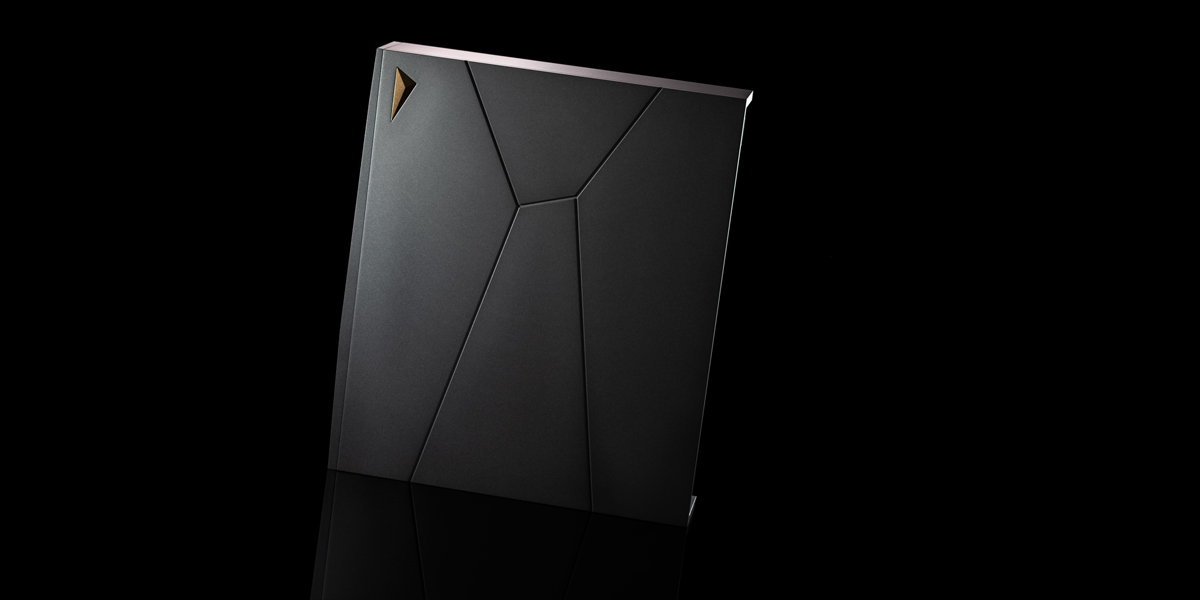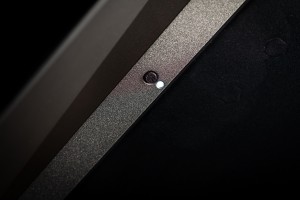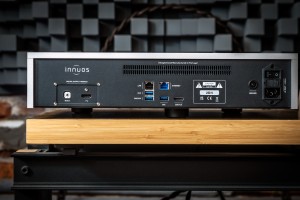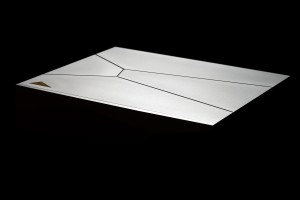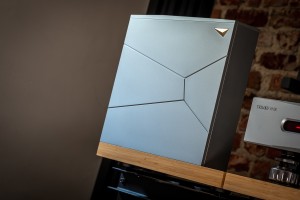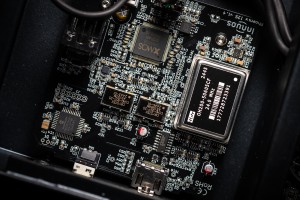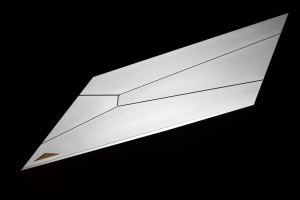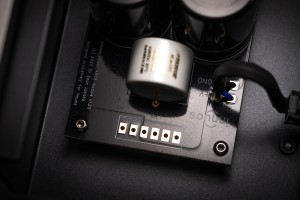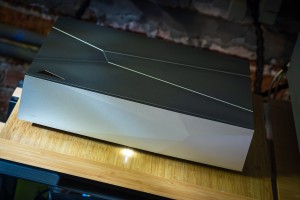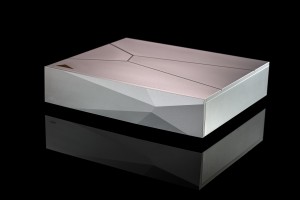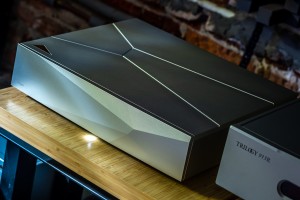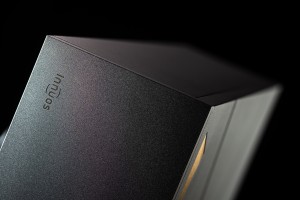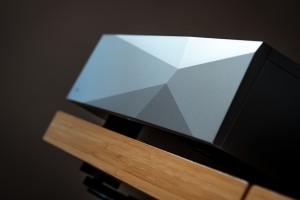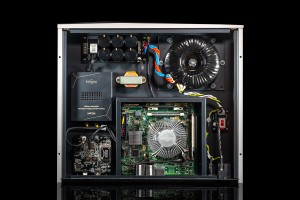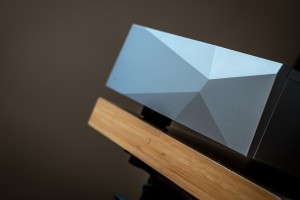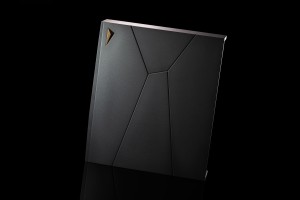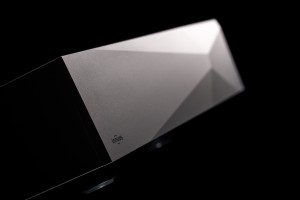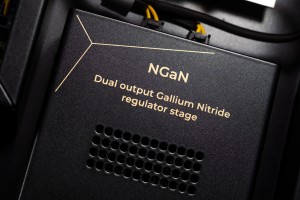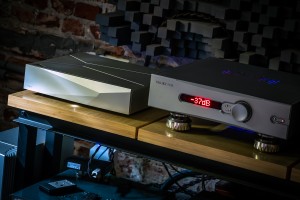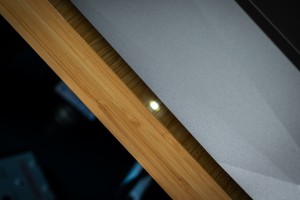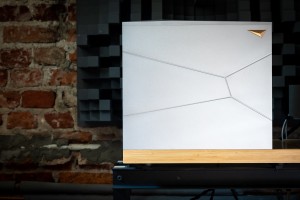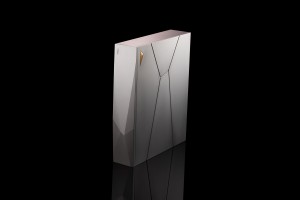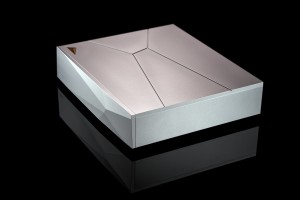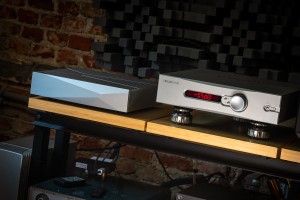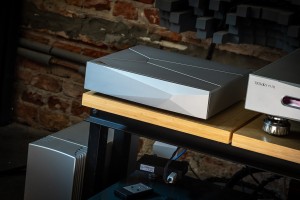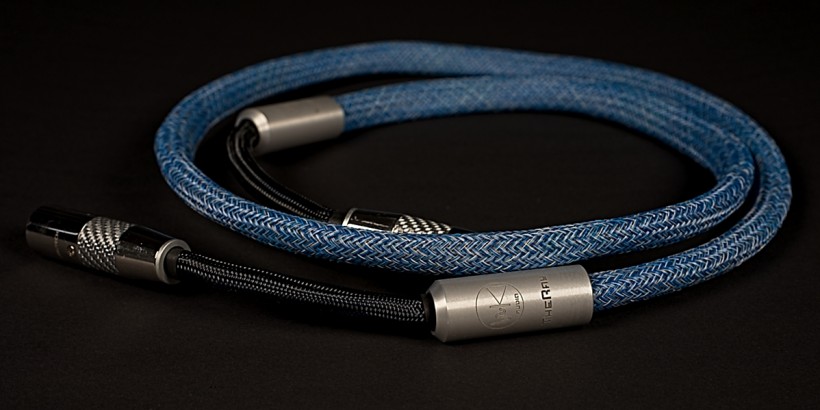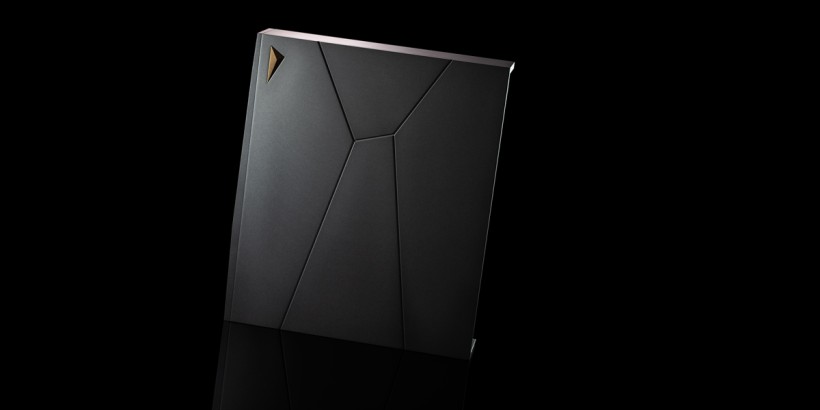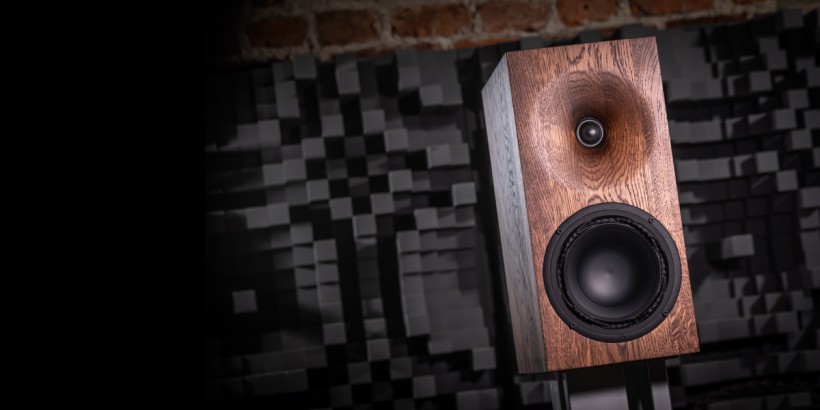Innuos ZENith Next-Gen is its makers’ top-tier single-chassis server/streamer that embeds their latest tech and also determines the new direction they now pursue. Recently this device made its way to my place and now it’s time to tell its story. Enjoy!
100%
Although the recent Munich gig was as good as ever, this time around it felt a bit nostalgic, too. No wonder. In 2026 the audio industry will move to Vienna, with high hopes that the new location will turn out even better than the MOC we had for 21 years. Considering how buttoned-up, predictable and familiar the latter was, well, my expectations about the next year’s edition are modest. All exhibitors asked about it uniformly said that they’ll miss Munich yet embrace the upcoming change and remain optimistic. Other than this, the 2025 show was business as usual to them and mainly a social event to yours truly. That said, over the course of three days spent at the MOC premises I saw a lot and had a listen here and there. Now it’s a good time to share my personal favorites. The large Audio Group Denmark area in hall 4 comprised four adjacent rooms and each with a different system. The one built upon their most affordable components under the brand Axxess had my full attention. In the context of Danes’ usual stickers, Axxess L3 floorstanders and Forté AiO formed a visually snazzy simple cost-effective setup that positively surprised for just the right reasons. The Boenicke room found on the atrium’s upper floor also followed in the same minimalist vein. Sven Boenicke’s top-shelf W22 speakers fronted by his latest quite compact AIO platform performed very much in line with the man’s more complex system presented at the MOC one year earlier. Sound to my liking and visually understated if not radical nature of the Boenicke AIO with W22 nearby had me sold. Next on the list was pretty much every room that had LampizatOr Horizon360 in it. I own this DAC so may be biased, but its extraordinary imaging, dynamics and freshness were sensible to me in each Munich system with it that I listened to. I’ve been rooting for Łukasz Fikus and his team for a long time, so seeing their Horizon360 in many upper-echelon systems at the industry’s most important audio event was a happy sight that felt nice. I had the same exact sentiment for Innuos.
The large Audio Group Denmark area in hall 4 comprised four adjacent rooms and each with a different system. The one built upon their most affordable components under the brand Axxess had my full attention. In the context of Danes’ usual stickers, Axxess L3 floorstanders and Forté AiO formed a visually snazzy simple cost-effective setup that positively surprised for just the right reasons. The Boenicke room found on the atrium’s upper floor also followed in the same minimalist vein. Sven Boenicke’s top-shelf W22 speakers fronted by his latest quite compact AIO platform performed very much in line with the man’s more complex system presented at the MOC one year earlier. Sound to my liking and visually understated if not radical nature of the Boenicke AIO with W22 nearby had me sold. Next on the list was pretty much every room that had LampizatOr Horizon360 in it. I own this DAC so may be biased, but its extraordinary imaging, dynamics and freshness were sensible to me in each Munich system with it that I listened to. I’ve been rooting for Łukasz Fikus and his team for a long time, so seeing their Horizon360 in many upper-echelon systems at the industry’s most important audio event was a happy sight that felt nice. I had the same exact sentiment for Innuos.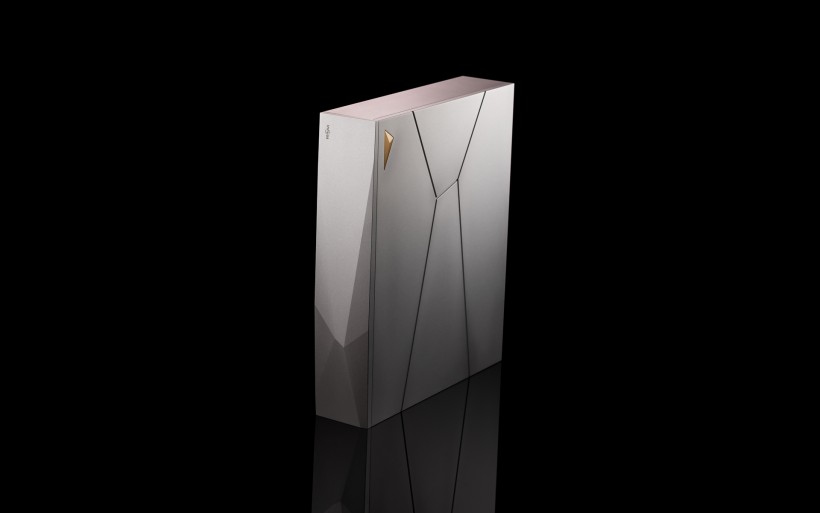 While the Munich show itself hasn’t changed much over the years, many audio manufacturers have. Some of them are gone, while others have blossomed into well-known, thriving enterprises. Founded in 2016 by computer science engineers Amelia Santos and Nuno Vittorino, the Portuguese company Innuos clearly belongs to the latter category. My first rodeo with their product dates back to 2018, when in a dark booth of a MOC hall it sat between Kii speakers on BXT modules. Fast forward to the recent HighEnd gig. Dozens of rooms accommodated Innuos designs, which I think speaks volumes about all the street cred the brand amassed over the years. Meanwhile, the Innuos room itself featured a system built upon Marten Coltrane Quintet speakers, Gryphon Commander/Apex analog end and MSB Cascade DAC on Artesania Exoteryc rack. This posh lot proved useful in properly introducing the company’s latest flagship server/streamer named Nazaré. I was granted the opportunity to comfortably listen to this menacing rig with the fancy newcomer and Statement just next to it, compare the two side by side and chuckle afterwards, but that’s a story for another time. For now I’ll just say that this experience was my personal highlight of the show. Amelia, Nuno and their team have gone a long way since their operation’s early days. In a fairly short time they managed to develop it into a professional business that works like a well-oiled highly capable machine. The last Munich HighEnd made that point more than well.
While the Munich show itself hasn’t changed much over the years, many audio manufacturers have. Some of them are gone, while others have blossomed into well-known, thriving enterprises. Founded in 2016 by computer science engineers Amelia Santos and Nuno Vittorino, the Portuguese company Innuos clearly belongs to the latter category. My first rodeo with their product dates back to 2018, when in a dark booth of a MOC hall it sat between Kii speakers on BXT modules. Fast forward to the recent HighEnd gig. Dozens of rooms accommodated Innuos designs, which I think speaks volumes about all the street cred the brand amassed over the years. Meanwhile, the Innuos room itself featured a system built upon Marten Coltrane Quintet speakers, Gryphon Commander/Apex analog end and MSB Cascade DAC on Artesania Exoteryc rack. This posh lot proved useful in properly introducing the company’s latest flagship server/streamer named Nazaré. I was granted the opportunity to comfortably listen to this menacing rig with the fancy newcomer and Statement just next to it, compare the two side by side and chuckle afterwards, but that’s a story for another time. For now I’ll just say that this experience was my personal highlight of the show. Amelia, Nuno and their team have gone a long way since their operation’s early days. In a fairly short time they managed to develop it into a professional business that works like a well-oiled highly capable machine. The last Munich HighEnd made that point more than well.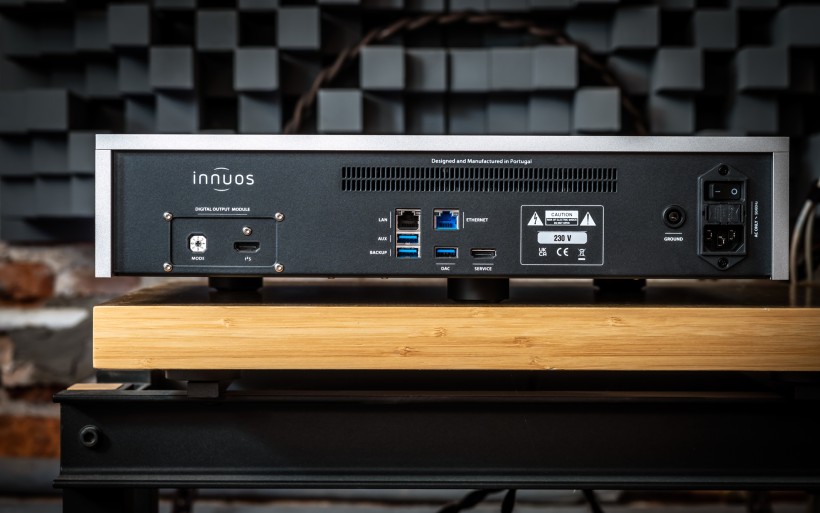 Prior to handing me the Gryphon RC and iPad for some 45 minutes or so, Nuno explained in detail how much the Nazaré project differed from all else they had done in the past. This intel alone deserves its own publication and perhaps an interview with the man himself, time will tell. The most important thing to take a note of now is that Nazaré runs on a brand new server-grade ‘PreciseAudio’ motherboard that’s been heavily customized for this platform on a hardware level. That kind of service demands extreme financial commitment. Now Innuos is in a position to play the ball. Nuno also said that this previously unattainable step was critical to unlocking the performance level and progress that the three-box Nazaré monolith represents. I have no clue when and if it will make its way to my listening room. On the upside, the new architecture used in this design trickled down to the products below in the roster. Innuos ZENith Next-Gen server/streamer also embeds it and packs quite a few surprises of its own. In Munich I was asked whether I’d like to try out the version with a I2S output done the Innuos way. As a Horizon360 owner, I was game. That’s how this review came to be.
Prior to handing me the Gryphon RC and iPad for some 45 minutes or so, Nuno explained in detail how much the Nazaré project differed from all else they had done in the past. This intel alone deserves its own publication and perhaps an interview with the man himself, time will tell. The most important thing to take a note of now is that Nazaré runs on a brand new server-grade ‘PreciseAudio’ motherboard that’s been heavily customized for this platform on a hardware level. That kind of service demands extreme financial commitment. Now Innuos is in a position to play the ball. Nuno also said that this previously unattainable step was critical to unlocking the performance level and progress that the three-box Nazaré monolith represents. I have no clue when and if it will make its way to my listening room. On the upside, the new architecture used in this design trickled down to the products below in the roster. Innuos ZENith Next-Gen server/streamer also embeds it and packs quite a few surprises of its own. In Munich I was asked whether I’d like to try out the version with a I2S output done the Innuos way. As a Horizon360 owner, I was game. That’s how this review came to be.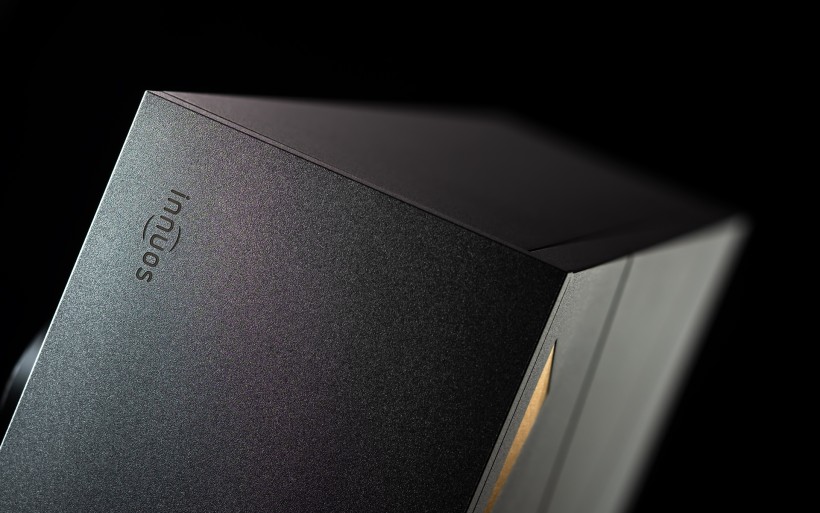 Innuos ZENith Next-Gen arrived in a cloth bag nested between two large foamy liners inside a double cardboard. Accessories included in the set comprised a quick start guide plus a standard-issue 2m Ethernet cable and power cord. Either a tablet or smartphone are a must to operate this device. It measures (W x D x H) 420 x 365 x 105mm and weighs 14.3kg, so is surprisingly heavy given its rather compact frame. This network server/streamer outputs native PCM/DSD data up to 32bit/768kHz/DSD512 and DSD256/1024 via DoP/I2S. From the get-go it runs on InnuOS, but can also work as a Roon Core/Bridge device and HQ Player Network Audio Adapter (NAA) endpoint. You can have it in any color as long as it’s either silver or black. That’s all she wrote as far as on-site specs go. Here’s where this story takes a major financial turn. Innuos ZENith Mk3 streamer/server that I reviewed five years ago was priced at €3’399/3’899/4’499 with 1/2/4TB storage respectively. Innuos ZENith Next-Gen is its direct successor and the manufacturer’s current single-chassis top dog that’s modular by design. In its basic streamer-only version without any storage and output board it sells for… €15’600. A 2/4/8/16TB SSD adds €370/690/1’950/3’900 to the bill, while the SPDIF/PhoenixUSB/PhoenixI2S board wants €650/1’200/1’700 extra. The message is clear. Take what you really need. Don’t bother with stuff you don’t. It can be installed later on anyway. My loaner with 8TB storage and PhoenixI2S circuit retails for €19’250, therefore sits dangerously close to the €20k Statement Next-Gen. WTF?
Innuos ZENith Next-Gen arrived in a cloth bag nested between two large foamy liners inside a double cardboard. Accessories included in the set comprised a quick start guide plus a standard-issue 2m Ethernet cable and power cord. Either a tablet or smartphone are a must to operate this device. It measures (W x D x H) 420 x 365 x 105mm and weighs 14.3kg, so is surprisingly heavy given its rather compact frame. This network server/streamer outputs native PCM/DSD data up to 32bit/768kHz/DSD512 and DSD256/1024 via DoP/I2S. From the get-go it runs on InnuOS, but can also work as a Roon Core/Bridge device and HQ Player Network Audio Adapter (NAA) endpoint. You can have it in any color as long as it’s either silver or black. That’s all she wrote as far as on-site specs go. Here’s where this story takes a major financial turn. Innuos ZENith Mk3 streamer/server that I reviewed five years ago was priced at €3’399/3’899/4’499 with 1/2/4TB storage respectively. Innuos ZENith Next-Gen is its direct successor and the manufacturer’s current single-chassis top dog that’s modular by design. In its basic streamer-only version without any storage and output board it sells for… €15’600. A 2/4/8/16TB SSD adds €370/690/1’950/3’900 to the bill, while the SPDIF/PhoenixUSB/PhoenixI2S board wants €650/1’200/1’700 extra. The message is clear. Take what you really need. Don’t bother with stuff you don’t. It can be installed later on anyway. My loaner with 8TB storage and PhoenixI2S circuit retails for €19’250, therefore sits dangerously close to the €20k Statement Next-Gen. WTF?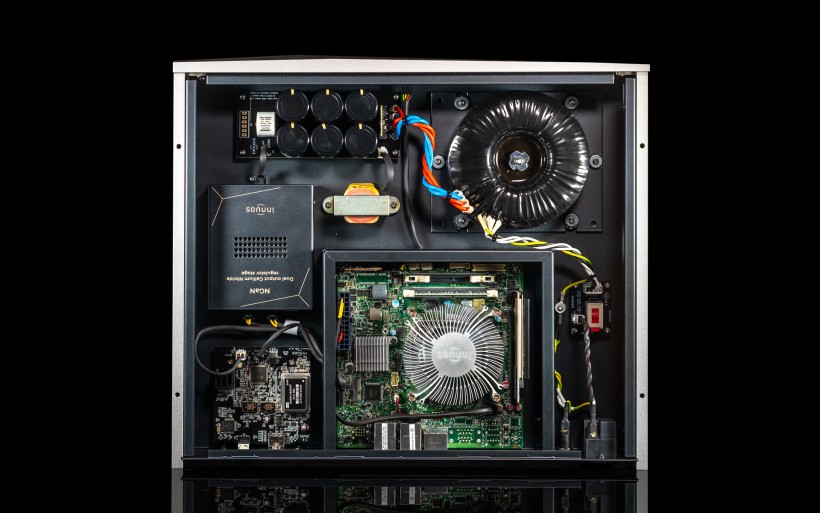 During our Munich convo Nuno could tell that the non-existent price difference between my Statement NG and ZENith NG had me puzzled. He only smiled and pointed out two things. One, the former platform is seven years old, which is a very long time to make noticeable performance leaps across the entire roster. Two, the PhoenixI2S module inside the brand new design makes a drastic difference for DACs such as mine. Fair enough, but today’s €15’600 base sticker compared to the predecessor’s MSRP was still a massive price. Two boxes instead of one for pretty much the same coin was easy math, too. However, past returning home, unpacking the ZENith NG, taking a peek under its hood and then using it, poof, all my concerns vanished. Innuos has always been super solid on visually modest universal exterior, build quality, sonic competence, practicality, top-shelf UX/UI and generous price-to-performance ratio. That said, this wasn’t a luxurious audio house per se. Now it is. Their Nazaré clearly gives off that kind of kosher vibes and so does ZENith NG.
During our Munich convo Nuno could tell that the non-existent price difference between my Statement NG and ZENith NG had me puzzled. He only smiled and pointed out two things. One, the former platform is seven years old, which is a very long time to make noticeable performance leaps across the entire roster. Two, the PhoenixI2S module inside the brand new design makes a drastic difference for DACs such as mine. Fair enough, but today’s €15’600 base sticker compared to the predecessor’s MSRP was still a massive price. Two boxes instead of one for pretty much the same coin was easy math, too. However, past returning home, unpacking the ZENith NG, taking a peek under its hood and then using it, poof, all my concerns vanished. Innuos has always been super solid on visually modest universal exterior, build quality, sonic competence, practicality, top-shelf UX/UI and generous price-to-performance ratio. That said, this wasn’t a luxurious audio house per se. Now it is. Their Nazaré clearly gives off that kind of kosher vibes and so does ZENith NG.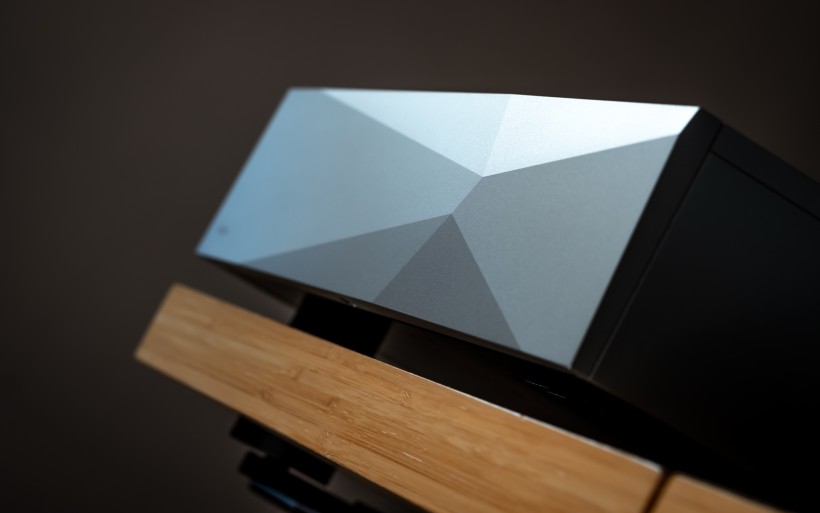 Innuos PULSE-series products updated the manufacturer’s recognizable four-tile fascia by adding two more panels to six in total. This report’s design features as many somewhat differently organized planes yet follows its makers’ well-established visual identity without a miss. Just as the PULSE before it, ZENith NG also doesn’t have a CD ripping slot and its easy-to-use secondary on/off hides on the forehead’s underside. The nearby LED shines on the surface below when the device is on yet remains invisible from afar. Clever. The perforated bottom features one easily accessible slot for additional storage and three strategically positioned anti-vibration pucks with foamy washers. Four long bolts on the underside go through side panels and keep the bonnet with stylish cutouts into place. The PhoenixI2S output board on my loaner’s rear features a HDMI port, which I think has become the industry’s I2S interface of choice. A tiny selector dial just next to it provides eight pinout presets, which secures compliance with most if not all I2S-capable DACs. Further to the right we see two auxiliary USB ports for external storage and CD ripper, and one regular USB DAC out directly from the motherboard. One of the two bridged RJ45 ports (LAN) in that area connects the Innuos with a router, while the other (Ethernet) comes in handy should we want to use i.e. a NAS storage. That way there’s no need to run twin long Ethernet cables from a router to the product. The service-only HDMI, grounding post and fused IEC inlet with the main on/off rocker seal the deal.
Innuos PULSE-series products updated the manufacturer’s recognizable four-tile fascia by adding two more panels to six in total. This report’s design features as many somewhat differently organized planes yet follows its makers’ well-established visual identity without a miss. Just as the PULSE before it, ZENith NG also doesn’t have a CD ripping slot and its easy-to-use secondary on/off hides on the forehead’s underside. The nearby LED shines on the surface below when the device is on yet remains invisible from afar. Clever. The perforated bottom features one easily accessible slot for additional storage and three strategically positioned anti-vibration pucks with foamy washers. Four long bolts on the underside go through side panels and keep the bonnet with stylish cutouts into place. The PhoenixI2S output board on my loaner’s rear features a HDMI port, which I think has become the industry’s I2S interface of choice. A tiny selector dial just next to it provides eight pinout presets, which secures compliance with most if not all I2S-capable DACs. Further to the right we see two auxiliary USB ports for external storage and CD ripper, and one regular USB DAC out directly from the motherboard. One of the two bridged RJ45 ports (LAN) in that area connects the Innuos with a router, while the other (Ethernet) comes in handy should we want to use i.e. a NAS storage. That way there’s no need to run twin long Ethernet cables from a router to the product. The service-only HDMI, grounding post and fused IEC inlet with the main on/off rocker seal the deal. After undoing four bolts on the ZENith NG’s underside I could easily remove the massive bonnet and take a peek inside. While a motherboard, CPU, RAM and SSDs found therein make it essentially a PC, these bits were selected for low noise and computing power to easily handle the manufacturer’s own Linux-based InnuOS software and optional modes. In this hobby, designs such as ZENith NG are relevant because all the downstream devices rely on signal they send out. The more we can strip this data from noise, the better sound we get to enjoy on our speakers or cans. Innuos are specialists in making it so. The server-grade PreciseAudio motherboard was customized to decrease CPU latency and EMI/power stage noise, and it also rocks power regulators and solid caps cherry-picked by Nuno and his R&D staff. Their CPU of choice is the latest-gen Intel Core i7 with four of its eight cores dedicated exclusively to audio processes. Ditto half of the total 16GB of industrial-grade low-noise DDR4 memory that’s reserved for the music playback only. The SSD with the InnuOS system is a pSLC (pseudo Single-Level Cell) drive that boasts increased durability and lower operating noise than regular counterparts. Although manufactured with TLC flash, the controllers in this SSD operate like SLC types, so they use one bit per cell instead of three. The advantage of this for audio is in the controller simplicity and lower latency. The power supply comprises a large 300VA resin-filled toroidal transformer that’s been decoupled from the enclosure via rubber dampers and packed with a SynShield-coated copper tape for magnetic screening between its secondaries. A large input choke in that area provides nearly continual sinusoidal energy flux to the bank of six Mundorf caps (130’000μF in total). The company’s ARC6 (Active Rectification with 6 capacitors) module actively does the AC/DC conversion instead of passive Schottky diodes to secure higher efficiency and lower heat and ripple. This circuit also decreases the impedance of the PSU, courtesy of the beefy capacitor reserve. Three power rails independently feed the motherboard, OS SSD and PhoenixI2S board. Innuos ZENith NG is also the roster’s first design that features a brand new NGaN (gallium nitride) voltage regulation stage in its own compartment. Lastly, the PhoenixI2S output board comprises a Connor-Winfield 3ppb 24MHz OCXO clock on a dedicated voltage rail and twin Crystek FemtoClocks from the CCHD-957 range.
After undoing four bolts on the ZENith NG’s underside I could easily remove the massive bonnet and take a peek inside. While a motherboard, CPU, RAM and SSDs found therein make it essentially a PC, these bits were selected for low noise and computing power to easily handle the manufacturer’s own Linux-based InnuOS software and optional modes. In this hobby, designs such as ZENith NG are relevant because all the downstream devices rely on signal they send out. The more we can strip this data from noise, the better sound we get to enjoy on our speakers or cans. Innuos are specialists in making it so. The server-grade PreciseAudio motherboard was customized to decrease CPU latency and EMI/power stage noise, and it also rocks power regulators and solid caps cherry-picked by Nuno and his R&D staff. Their CPU of choice is the latest-gen Intel Core i7 with four of its eight cores dedicated exclusively to audio processes. Ditto half of the total 16GB of industrial-grade low-noise DDR4 memory that’s reserved for the music playback only. The SSD with the InnuOS system is a pSLC (pseudo Single-Level Cell) drive that boasts increased durability and lower operating noise than regular counterparts. Although manufactured with TLC flash, the controllers in this SSD operate like SLC types, so they use one bit per cell instead of three. The advantage of this for audio is in the controller simplicity and lower latency. The power supply comprises a large 300VA resin-filled toroidal transformer that’s been decoupled from the enclosure via rubber dampers and packed with a SynShield-coated copper tape for magnetic screening between its secondaries. A large input choke in that area provides nearly continual sinusoidal energy flux to the bank of six Mundorf caps (130’000μF in total). The company’s ARC6 (Active Rectification with 6 capacitors) module actively does the AC/DC conversion instead of passive Schottky diodes to secure higher efficiency and lower heat and ripple. This circuit also decreases the impedance of the PSU, courtesy of the beefy capacitor reserve. Three power rails independently feed the motherboard, OS SSD and PhoenixI2S board. Innuos ZENith NG is also the roster’s first design that features a brand new NGaN (gallium nitride) voltage regulation stage in its own compartment. Lastly, the PhoenixI2S output board comprises a Connor-Winfield 3ppb 24MHz OCXO clock on a dedicated voltage rail and twin Crystek FemtoClocks from the CCHD-957 range. 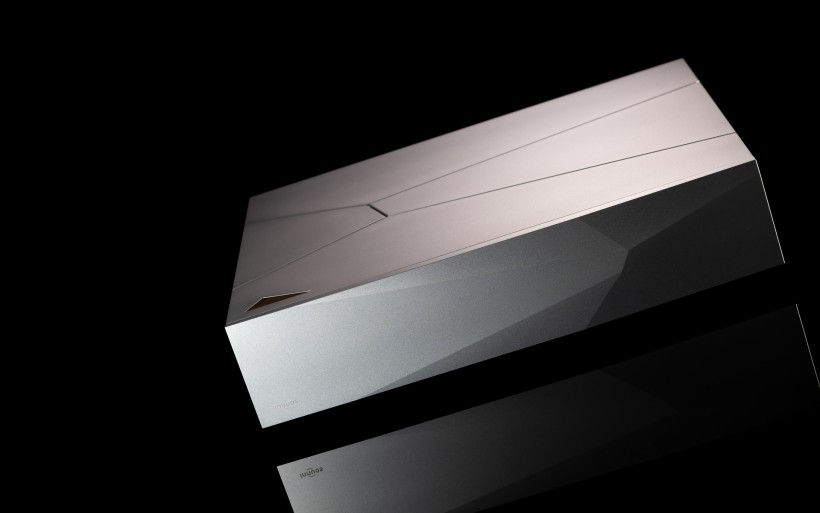 The I2S protocol was originally designed for short-distance comms between circuits inside the same device. The audiophile biz utilizes it as an external interface between two digital products. As far as sound quality is concerned, it works remarkably well for two reasons. One, I2S separates clock and serial data, so the former doesn’t have to be recovered from the latter upon arrival to the receiving end and that lowers jitter. Two, it offers an elegantly simple short signal route from a transport directly to a DAC’s internal D/A converter chip, so that its digital receiver aka major bottleneck is effectively bypassed. Less is more and all that jazz? Quite. While the use of I2S instead of USB doesn’t guarantee better sonics in every single system, it’s a very promising and exciting prospect nonetheless. If I had to single out one component inside my Horizon360 DAC that I’d very much like to somehow avoid and get the extra mileage from this monster, its USB receiver would be it. Innuos ZENith NG allowed me to do just that. Happy days. This is precisely the reason why I was looking forward to guesting this ambitious device in my listening room. Now let’s see how it fares where it really counts.
The I2S protocol was originally designed for short-distance comms between circuits inside the same device. The audiophile biz utilizes it as an external interface between two digital products. As far as sound quality is concerned, it works remarkably well for two reasons. One, I2S separates clock and serial data, so the former doesn’t have to be recovered from the latter upon arrival to the receiving end and that lowers jitter. Two, it offers an elegantly simple short signal route from a transport directly to a DAC’s internal D/A converter chip, so that its digital receiver aka major bottleneck is effectively bypassed. Less is more and all that jazz? Quite. While the use of I2S instead of USB doesn’t guarantee better sonics in every single system, it’s a very promising and exciting prospect nonetheless. If I had to single out one component inside my Horizon360 DAC that I’d very much like to somehow avoid and get the extra mileage from this monster, its USB receiver would be it. Innuos ZENith NG allowed me to do just that. Happy days. This is precisely the reason why I was looking forward to guesting this ambitious device in my listening room. Now let’s see how it fares where it really counts.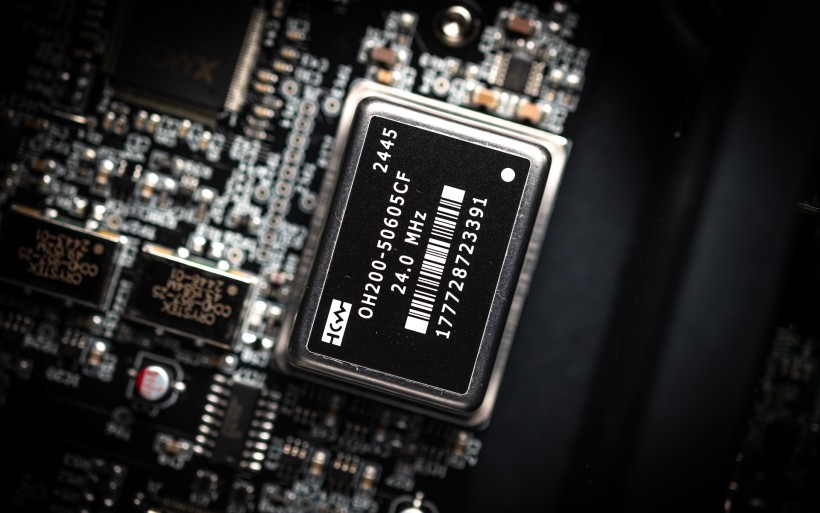 Innuos ZENith NG naturally had to tussle with the Statement NG that was promoted to my daily driver in late February 2024. Since they run on the same highly polished software, the necessary swaps between them were as easy and quick as it gets. Both devices connected to my network switch, the Sense app instantly listed them and allowed me to conveniently select my streaming device of choice without router resets, downtime or crashes. Once the Statement NG connected to the Horizon360 via USB and the ZENith NG via HDMI, I didn’t have to move from the listening seat. Just one button press on the remote wand swapped digital inputs on the DAC and got me sound. To level the battlefield, both Innuos machines saw the same Boenicke M2 power cord. I migrated several albums from the Statement NG to its one-box sibling and that was it. Here it’s worth mentioning that the bond over I2S between the latter and Horizon360 was flawless.
Innuos ZENith NG naturally had to tussle with the Statement NG that was promoted to my daily driver in late February 2024. Since they run on the same highly polished software, the necessary swaps between them were as easy and quick as it gets. Both devices connected to my network switch, the Sense app instantly listed them and allowed me to conveniently select my streaming device of choice without router resets, downtime or crashes. Once the Statement NG connected to the Horizon360 via USB and the ZENith NG via HDMI, I didn’t have to move from the listening seat. Just one button press on the remote wand swapped digital inputs on the DAC and got me sound. To level the battlefield, both Innuos machines saw the same Boenicke M2 power cord. I migrated several albums from the Statement NG to its one-box sibling and that was it. Here it’s worth mentioning that the bond over I2S between the latter and Horizon360 was flawless.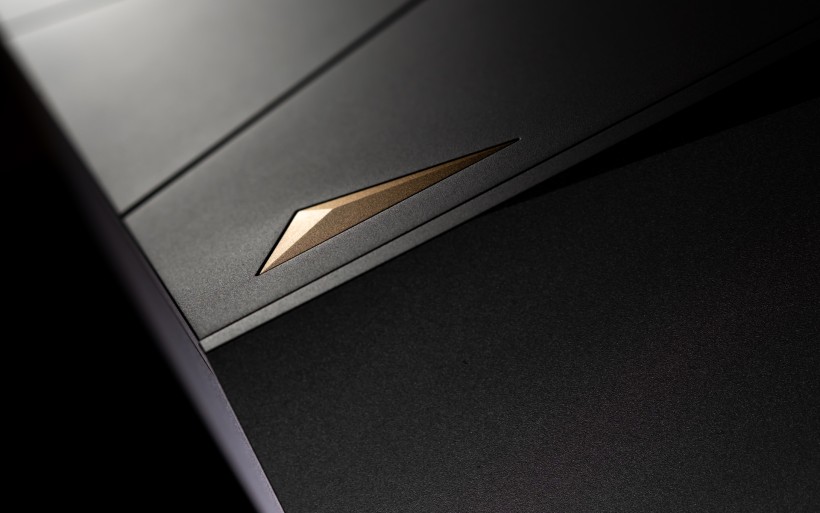 For some extra context, let’s recap the recent fight between the Statement NG and PULSAR that had its official debut in April 2023. In this review I wrote that: “…to my ears the Statement NG’s sound doesn’t feature any weak links. It’s as accomplished on energy provision, dynamics, snap, precision, clarity and articulation as it is on textural fronts and all other traits which make music enjoyable to listen to. It also won’t steer a system’s sound in any particular direction. Rather, it’ll provide support for the downstream components no matter what sound they make. In that sense the Statement NG is as transparent as it is elegant. The PULSAR largely followed suit here, both struck me as similarly voiced and that was rather unexpected. Prior to any auditions, the thrice as dear Statement NG suggested its clear superiority in many regards. Comparing the two, listing these advantages and calling it a day was the obvious plan. No dice. During the first listen the PULSAR felt somewhat different yet not inferior, which all by itself was telling and good omen. However, my impressions of it gradually changed and its dearer stablemate proved better still. Arriving to this conclusion just took longer than it usually does.”
For some extra context, let’s recap the recent fight between the Statement NG and PULSAR that had its official debut in April 2023. In this review I wrote that: “…to my ears the Statement NG’s sound doesn’t feature any weak links. It’s as accomplished on energy provision, dynamics, snap, precision, clarity and articulation as it is on textural fronts and all other traits which make music enjoyable to listen to. It also won’t steer a system’s sound in any particular direction. Rather, it’ll provide support for the downstream components no matter what sound they make. In that sense the Statement NG is as transparent as it is elegant. The PULSAR largely followed suit here, both struck me as similarly voiced and that was rather unexpected. Prior to any auditions, the thrice as dear Statement NG suggested its clear superiority in many regards. Comparing the two, listing these advantages and calling it a day was the obvious plan. No dice. During the first listen the PULSAR felt somewhat different yet not inferior, which all by itself was telling and good omen. However, my impressions of it gradually changed and its dearer stablemate proved better still. Arriving to this conclusion just took longer than it usually does.”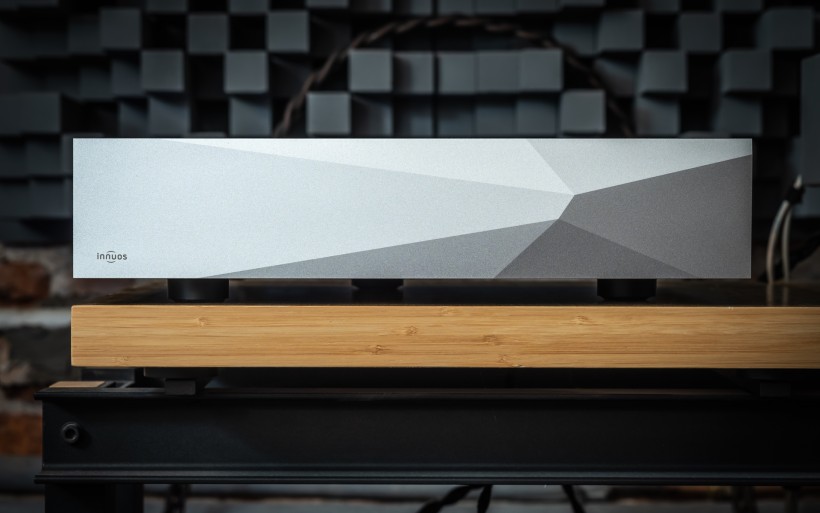 “Each time I’m about to sample an expensive audio product, I hope to hear a particular type of elegance comprised of background blackness, moist textures, big tone and casually served tiny details. These traits keep listener fatigue at the door, make music pleasant to intake and also make the very foundation for precise imaging, clarity, agility and wide dynamic span. While top-shelf audio designs emphasize various assets, they all have that elegant base built in. If it’s not there, inherently speedy hardware becomes abnormally forward, nervous, piercing, hollow, dry and grainy. Devices tuned for warmth and heft emerge as stuffy, fuzzy, spatially constrained and sensibly slow. This essential care package has its roots in quality power supplies, which the Statement NG compared to its predecessor already stressed. While I didn’t expect PULSAR being anywhere as gifted in this regard as its thrice as expensive kin, it truly was and had me corrected on the matter. That’s also the key reason why I initially considered the PULSAR as noticeably better than its price would suggest.”
“Each time I’m about to sample an expensive audio product, I hope to hear a particular type of elegance comprised of background blackness, moist textures, big tone and casually served tiny details. These traits keep listener fatigue at the door, make music pleasant to intake and also make the very foundation for precise imaging, clarity, agility and wide dynamic span. While top-shelf audio designs emphasize various assets, they all have that elegant base built in. If it’s not there, inherently speedy hardware becomes abnormally forward, nervous, piercing, hollow, dry and grainy. Devices tuned for warmth and heft emerge as stuffy, fuzzy, spatially constrained and sensibly slow. This essential care package has its roots in quality power supplies, which the Statement NG compared to its predecessor already stressed. While I didn’t expect PULSAR being anywhere as gifted in this regard as its thrice as expensive kin, it truly was and had me corrected on the matter. That’s also the key reason why I initially considered the PULSAR as noticeably better than its price would suggest.” “The first fight between the PULSAR and Statement NG was a tie in terms of backdrop inkiness, smoothness, textural provision, imaging size and spatial complexity. Some mild differences registered yet weren’t worth holding on to. Two weeks in however, the PULSAR’s generous softness, elasticity and organic flavoring shone through as its most prominent virtues that marked it an artful charmer not a fierce brute. If it were a DAC, it would be a ladder design inherently groomed for posh sensual atmospheric sound. Their kind excels where long hours of fatigue-free listening are in demand. Here high relaxation, softness and politeness are prioritized over bite, sparks, vigor, dynamics, immediacy, spatial drama and detail retrieval. While to my ears that was the PULSAR’s fetching angle, the Statement NG was as emotionally developed yet had all the sporty traits expanded further. That made all the difference. The former was more polite, relaxed and a touch darker. The latter secured the extra bite, higher resolution, intensity and wider dynamics without any shyness on color, mood or romance. As the naturally more investigative of the two, the twin-box Innuos offered a proportionately deeper level of insight that amplified each instrumental passage, vocal line, background shimmers and contents upstairs. It also portrayed rawness and ferocity embedded in heavy genres without any restraint. On these fronts the PULSAR wasn’t quite as intense, immediate and dynamically broad.”
“The first fight between the PULSAR and Statement NG was a tie in terms of backdrop inkiness, smoothness, textural provision, imaging size and spatial complexity. Some mild differences registered yet weren’t worth holding on to. Two weeks in however, the PULSAR’s generous softness, elasticity and organic flavoring shone through as its most prominent virtues that marked it an artful charmer not a fierce brute. If it were a DAC, it would be a ladder design inherently groomed for posh sensual atmospheric sound. Their kind excels where long hours of fatigue-free listening are in demand. Here high relaxation, softness and politeness are prioritized over bite, sparks, vigor, dynamics, immediacy, spatial drama and detail retrieval. While to my ears that was the PULSAR’s fetching angle, the Statement NG was as emotionally developed yet had all the sporty traits expanded further. That made all the difference. The former was more polite, relaxed and a touch darker. The latter secured the extra bite, higher resolution, intensity and wider dynamics without any shyness on color, mood or romance. As the naturally more investigative of the two, the twin-box Innuos offered a proportionately deeper level of insight that amplified each instrumental passage, vocal line, background shimmers and contents upstairs. It also portrayed rawness and ferocity embedded in heavy genres without any restraint. On these fronts the PULSAR wasn’t quite as intense, immediate and dynamically broad.” While I dislike crunching sound into numbers, in the review of PULSAR I remarked that it reached about 90% of the Statement NG’s sonic competence level for one third of the money. This is why in its summary I named it a Statement Jr. Considering its younger age, that actually seemed fitting. The PULSAR also demonstrated how much its makers have progressed in five years that separate these two products. However, squeezing out the last 10% of the performance is often the hardest task that eats up the most resources. With that in mind, we can now move onto theZENith NG that climbed all the way to the reference 100% peak determined by the Statement NG. The way how the former behaved made me to think of it as the higher-tiered PULSAR version more than any other Innuos.
While I dislike crunching sound into numbers, in the review of PULSAR I remarked that it reached about 90% of the Statement NG’s sonic competence level for one third of the money. This is why in its summary I named it a Statement Jr. Considering its younger age, that actually seemed fitting. The PULSAR also demonstrated how much its makers have progressed in five years that separate these two products. However, squeezing out the last 10% of the performance is often the hardest task that eats up the most resources. With that in mind, we can now move onto theZENith NG that climbed all the way to the reference 100% peak determined by the Statement NG. The way how the former behaved made me to think of it as the higher-tiered PULSAR version more than any other Innuos.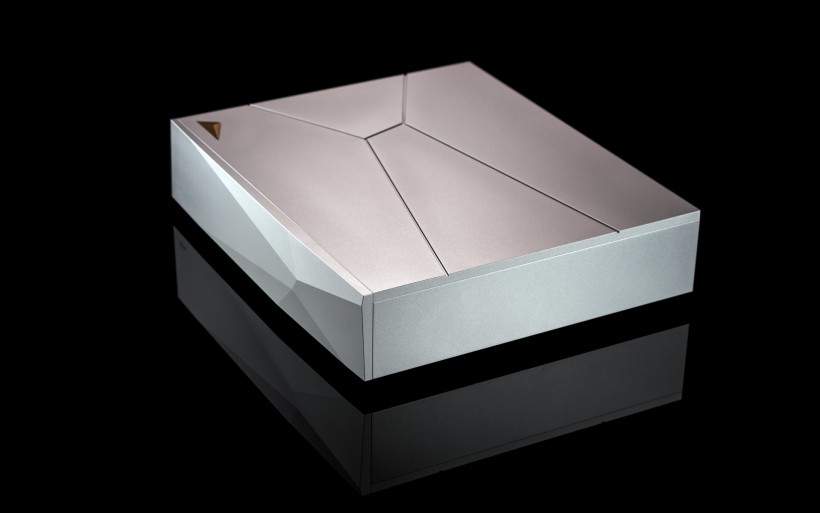 While the ZENith NG and Statement NG were equals on sound quality alone, they weren’t quite alike. The twin-box design still felt spicier, in the sense that my system’s sound with it on the job was dynamically broader, a touch more open, fresh, radiant, lucid, snappier, leaner, more direct and all in all sensibly livelier. The disparity on these fronts between the two machines was however fairly small. Let me stress that the PULSAR couldn’t compete with my daily driver in the long run. The ZENith NG clearly could and did so on its own terms. It had its revenge on higher color intensity and smoothness, greater textural differentiation and instrumental and vocal elegance. Atop that it also felt more moist, fruitier, meticulous and organic. All things considered, I’d wager that after comparing them most listeners would find the ZENith NG to be tuned for a more mature analog-like audiophile sound that’s inherently somewhat soft, calm and sensual, and the Statement NG to be happier, younger and more raw. Think DSD against hi-rez PCM playback respectively, but both executed to a very high standard and valid. That’s the rough guideline.
While the ZENith NG and Statement NG were equals on sound quality alone, they weren’t quite alike. The twin-box design still felt spicier, in the sense that my system’s sound with it on the job was dynamically broader, a touch more open, fresh, radiant, lucid, snappier, leaner, more direct and all in all sensibly livelier. The disparity on these fronts between the two machines was however fairly small. Let me stress that the PULSAR couldn’t compete with my daily driver in the long run. The ZENith NG clearly could and did so on its own terms. It had its revenge on higher color intensity and smoothness, greater textural differentiation and instrumental and vocal elegance. Atop that it also felt more moist, fruitier, meticulous and organic. All things considered, I’d wager that after comparing them most listeners would find the ZENith NG to be tuned for a more mature analog-like audiophile sound that’s inherently somewhat soft, calm and sensual, and the Statement NG to be happier, younger and more raw. Think DSD against hi-rez PCM playback respectively, but both executed to a very high standard and valid. That’s the rough guideline.
Although it’s accurate that this outcome was somewhat unexpected, it made sense. Innuos have progressed a lot with their tech since the 2018 Statement launch and that had to factor in. However, my gut feeling was that the new ZENith’s PhoenixI2S significantly elevated my DAC’s own potential by avoiding its in-built USB receiver and that registered, too. At the end of the day, we’re exposed to sound made by entire systems, not individual components. Of course to confirm my theory I’d have to install the same I2S output module in my Statement NG, compare it to today’s effort and only then find out whether this circuit was the main enabler indeed. Odds are that the twin-box Innuos augmented with it would have the upper hand. Alas, the I2S circuit for it isn’t a thing and it remains to be seen whether it will be or not. For now, the remarkable I2S-infused Innuos ZENith Next-Gen is here. On the performance ladder it sits as high as the Statement NG yet boasts even fancier exterior, takes less shelf space, is as polished on UI/UX and priced accordingly to what it does and how. If you fancy DSD-like sonics, your DAC packs I2S input and the idea of spending €20k on a server/streamer device doesn’t rub you the wrong way, then I reckon that Innuos ZENith Next-Gen will do a helluva lot for your system.
Associated Equipment:
- Amplifier: Trilogy 995R, FirstWatt F7, Enleum AMP-23R
- DAC: LampizatOr Horizon360 (Stradi 5U4G + Psvane Art TIII 4x KT88 / 2x 6SN7)
- Speakers: Boenicke Audio W11 SE+, sound|kaos Vox 3afw
- Transport: Innuos Statement, fidata HFAS1-S10U
- Preamplifier: Trilogy 915R, Thöress DFP
- Speaker cables: Boenicke Audio S3, LessLoss C-MARC
- Headphones: HifiMan Susvara
- Speaker signal conditioning: LessLoss Firewall for Loudspeakers, Boenicke ComDev
- Anti-vibration conditioning: 6x Carbide Base Diamond (under streamer), 6x Carbide Base Micro Diamond with TwinDamp inserts and spikes (under DAC and pre), Vibra 68 (under speakers), 12x LessLoss Giant Steps (under streamer, DAC and pre)
- Interconnects: LessLoss Entropic Process C-MARC, Boenicke Audio IC3 CG
- Power components: Gigawatt PC-3 SE EVO+/LC-3 EVO, LessLoss C-MARC, LessLoss Entropic C-MARC, LessLoss Stellar C-MARC, LessLoss Power Distributor into Boenicke Audio Power Gate, ISOL-8 Prometheus
- USB components: AudioPhonique Desire USB
- Rack: Franc Audio Accesories Wood Block Rack 1+3
- Network: Fidelizer EtherStream, Linksys WRT160N
- Music: NativeDSD
Retail prices of reviewed components in EU (incl. VAT):
- Innuos ZENith Next-Gen (as reviewed): €19’250
- Innuos ZENith Next-Gen (streamer only, no storage/output board): €15’600
- 2/4/8/16TB SSD: +€370/690/1’950/3’900
- SPDIF/PhoenixUSB/PhoenixI2S output board : +€650/1’200/1’700
Manufacturer: Innuos


